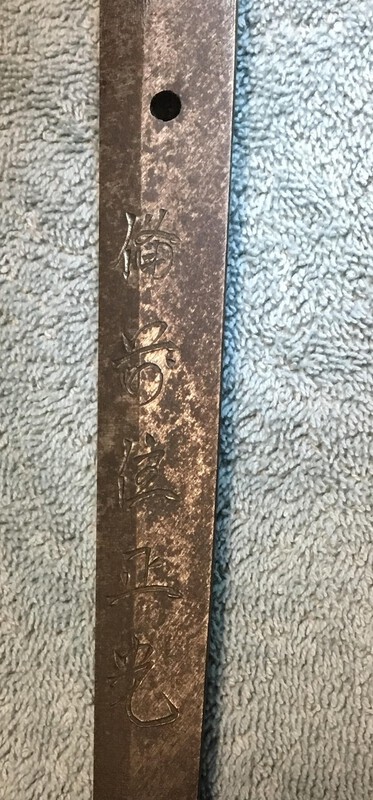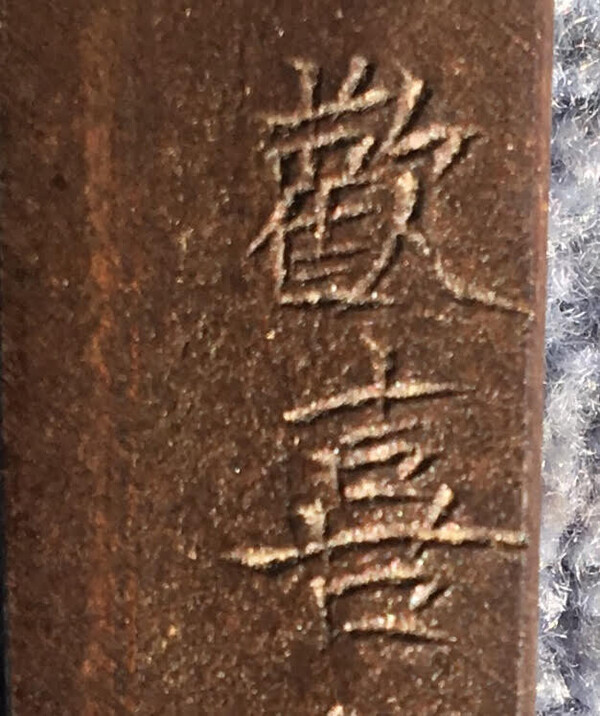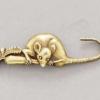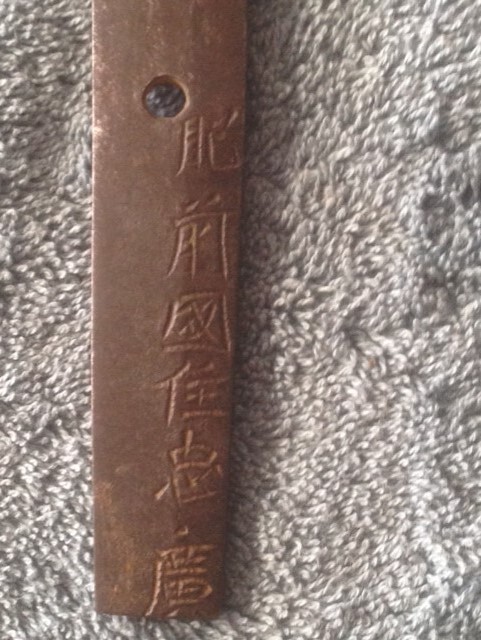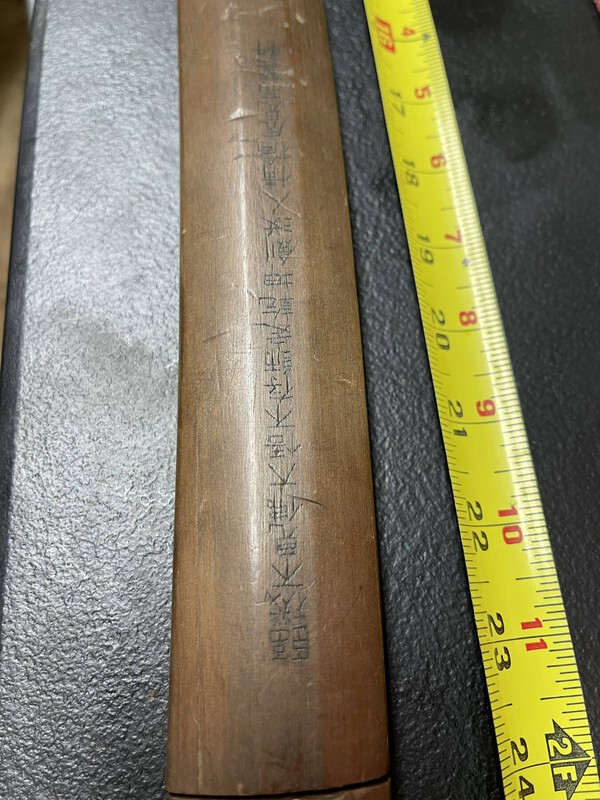Search the Community
Showing results for tags 'tachi'.
-
Ok, I admit I get caught up with the variety found in gunto fittings. But I have seen dozens of types of sarute. Even the clasped hand design has so many variations, from just rudimentary fingers, to a full on pre-corona virus hand shake. Here are a few.
-
Unique Tachi-style sword For Sale. Shinsa of both koshirae and blade is recommended. $2900 direct (can pull the eBay listing to get the price here). plus postage, and PP/credit card fee if choosing to pay that way. https://www.ebay.com...65115589725&_sacat=0 --Matthew Brice St. Croix Blades
-
Dear New Friends, I am new to this forum. After long waiting and saving, I bought a Ko Naminohira Tachi. The Sayagaki (from 1952) says: Hogen- era (late Heian, 1156). So say the sellers - both in Japan and here in Holland. Other people with knowledge maintain, though, the Tachi (which has one almost unreadable 'An' character near the peg hole) is of later date: Kamakura. Not necessarily based on the nakago - in the National Museum in Tokio there are a few Heian tachi's who don't have the characteristic Heian 'Pheasant Leg' but a nakago similar as mine ('chestnut') The Tachi is ubi, 77 cm cutting egde, 99 cm in total, has a relatively low waist - but you please judge it yourself - and weights a little 623 grams. It has its Tokobetsu Hozon and is judged als Jidda: Hogen in 1952. Is there anyone who is at home with the newest insights? For details, please see: https://kyodaiorigin...satsuma-by-yasuyuki/ Many thanks, robert
-
-
Dear All, I have a table booked at the Birmingham Antique Arms Fair this coming Sunday. I have some swords, tsuba, books, a yari and a sword chest to sell. Prices will be competitive and I'm open to a degree of haggling so please swing by to try to snag a bargain. Alternatively, just drop by and introduce yourselves. I'll add a list of items and prices shortly and if anyone would like further details or photographs please PM me. Hope that's OK with the mods...and as I'm using the forum to plug my sale, a donation will be made. Thanks in advance for looking.
-
Hello there! I am new in this circle and need your help. I consider the purchase of a contemporary Tachi (Tokubetsu Hozon Token) in shirasaya and consider having it fitted with a high grade koshirae. I own a pair of nice Manuki (photo) that inherited from my father that I would like to use. He also left a collection of Tsuba, but rather than getting one of those refitted I consider having a new one made. All of this work should be executed in Japan, as the Tachi is presently still there. My questions is: can you advise me of a good contact to get started with this project and what would be the price range for a complete koshirae? Appreciating any helpful pointers. Cheers!
-
Hello everyone ! Just wanted to share with you a project we are working on from Japan. A 80cm blade Tachi with a Koshirae for one of our customer who wants to practice tameshigiri. The customer gave us a lot of freedom on the details and style so it will be very satisfying to make realise this project. The Tachi will have a long leather handle, silver heavy tsuba and silver fittings. Can't wait to share with you guys more on this sword and show you pictures when the sword is finished ! We're also currently working on an even more crazy project that might have never been done before, let me know if you're interested to see.
-
Greetings Everyone! I have always loved Japanese culture history, especially samurai and their weapons and armors. I have always wanted a collection of my own. I’ve been in Japan the past 2 weeks (flying back today), and after visiting a couple of sword shops, I think I’m ready to start my collection with my first sword. I’ve been in contact with the manager from Samurai Museum. They seem like a legit business that sell authentic items. I just wish they still had a physical location so I could’ve seen the items in person. I came across this beautiful NBTHK Juyo Token Tachi on their website, and can’t stop thinking about it. Their manager said he would sell it for me for $42,500; a discount from the current listed price. I have a great paying job and when it comes to investment, I don’t mind paying for items that would go up over time. what do you guys think about this item and Samurai Museum in general as a business? I will post the direct link to the item and the additional pictures and videos they sent me on Google drive. I’m a noob and have been doing my research and will continue to do more, but before consider buying this sword, I’m coming to you guys for help. is it a good investment? Long term goal is to have an amazing private collections of samurai items that I can pass down to my kids and their kids and etc. thank you and I apologize if I posted this in the wrong group! https://www.samuraim...o-token-certificate/ https://drive.google...HbrP6d37?usp=sharing
-
-
Well, I never had. When this one came up at that recent auction in Texas, I went scrambling to find out what I could about them and then decided to sell my car to buy it (not literally, but one should know that my car, which I just traded in for a newer used car a couple of months ago) was only worth $1000 on trade in, considerably less than this sword cost. Anyway, according to Markus' Encyclopedia (one of the most useful sword books ever!), these swords were worn by the imperial family or by kuge, court aristocrats. Based on his further detailed description, and the fact that this one has mother of pearl inlay in a nashiji ground, it would have been owned by the highest level of kuge but not by a member of the imperial family. There are six or seven lower ranks of kuge that can be discerned by the types of koshirae on their kazari-tachi. I thought I would share a few of the photos. I am also debating about what to do with it in terms of restoration and papers, so feel free to share your views (other than it's worthless and that I should send it to you right away!). Cheers, Bob
-
(Story details are a little fuzzy) Way before I was born, my grandfather had a beautiful early Kamakura period Ko-Aoe Tachi (either Juyo bunkazai or kokuho) during the early 70s-80s. Which ended up being returned/sold to Japan and now resides in one of the museums (not entirely sure which one). Is there an online archive with pictures of the current National treasure swords? Seeing how there’s only 112 that have received National treasure designation, I suspect it wouldn’t be too hard to find pictures of the one we once owned. Given the school, province, and period should also narrow it down to a few. I’d be ecstatic for any information of where I can find pictures of the current treasures, Thank you!!
-
Wondering if I could please get some help translating this sayagaki by Tanobe sensei? I know the photos aren’t the best—I have already consigned the sword to an auction house, and I don’t seem to have taken any photos myself. So hopefully someone can make out the translation with screenshot photos of the auction house’s listing. Thank you so much if you can help! —Matt
-
Gents, I am pleased to offer a beautiful and flawless gendaito tachi made by the late Yasukuni shrine smith Osaki Yasumune in 1978. I purchased this great sword not long ago from Grey Doffin. Unfortunately I have to part with it, because off personal reasons. You can find the former listing on Grey‘s website. Here are the information about the sugata: Nagasa: 79,5cm Sori: 2,8cm Motohaba: 3,4cm Motokasane: 0,8cm Sakihaba: 2,1cm Sakikasane: 0,55cm Nakago Nagasa: 20,6cm Overall in Shirasaya: 110,5cm The mei reads: Chikuzen Ju Yasumune Saku. Showa Go Ju San Nen San Gatsu Hi ( a day in March 1978 ) Besides there is a soemei, that translate as: Owned by Masuiyama Daishiro. He was a sumo wrestler born in 1948, who achieved the second highest rank of Ouzeki. It is a long tradition in Sumo to offer fine swords to the stars of the sport. This Tachi is constructed in shinogi zukuri and has a strong koshi zori. It has a iore mune and also a chu kissaki. Both sides of the blade have a bohi. The hada of the sword is a fine, tight ko itame hada. The hamon is a suguba made of small choji gunome, nioi guchi with fine nie and subtle hataraki throughout. The boshi is a slightly swept o maru with a short kaeri. The Yasumune comes in a well made shirasaya and has a gold foil single habaki. The blade is flawless and has a quality Japanese polish. Although this sword was made long after WW2, it is made with the same characteristics as the swords made in the Yasukuni shrine during the war. The Tachi is in Germany, but I offer international shipping with DHL premium. My asking price is 3900€ obo.
-
O Suriage Tachi late Kamakura Circa 1290-1300. 68 cm NBTHK Tokubetsu Hozon attribution to Yamato Taima Specifically to Cho Aritoshi Cho is short for Chobeinojo Aritoshi This school takes its name from the Taimadera temple in Nara. They made swords for the warrior monks who protected the holdings and land belonging to the temple. They rarely signed these swords and the works of this school are rare . Sayagaki by Mr Tonobe The Hada of this sword is really beautiful.
- 23 replies
-
- 14
-

-

-

-
Hello again gentlemen! This is a blade that I recently acquired locally. At first, before cleaning it, I thought it was going to be another relatively young blade that has simply gone through a world war and was brought back by a veteran. Beneath all the cosmoline or brake grease (and grass clippings), came a blade with no edge damage and a surprisingly interesting hamon. The blade is 27 1/4" with a very nice o-kissaki point. It has two mekugi-ana, of which both appear to be drifted. The fittings are somewhat plain but have some hint at having some kind of applied ornamentation (cloisonne?) having existed though it is mostly gone, some manner of white flecks that have mostly rubbed off. The flecks appear on the kashira, tsuba, and kojiri. The tsuba, although plain appears to have a shakudo plug in it. After cleaning it, I was impressed and made an offer which was accepted. When I brought this to my local Token Kai meeting, neither I nor Dan could figure out what exactly we were looking at. We spent a good while pouring over the book he brought, trying to narrow its manufacture down, to no avail. There are also a few spots where the hamon lifts up beyond the normal pattern. One notable oddity was that on the omote side of the blade, about 3" up from the hakabi is a set of three circles in a triangular arrangement above the hamon. But most noticeable of all is the CRAZY amount of kaeri. The hardening goes at least down half to two-thirds of the mune towards the habaki. The mune width itself is also rather narrow compared to many other blades I've seen. Its not quite a cormorant neck shape, but it is nearly diamond-shape. I am unsure if the blade exhibits true utsuri or not, but there appears to be evidence for it. I am also unsure if the blade is simply suriage or o-suriage. The sori is interesting too. Therefore, for your perusal, is this blade! My asks are: Probable age/era of production School Possible smiths Ideas for the reason of the strange hamon/kaeri Suriage or o-suriage As always, any and all help and opinions are appreciated! This one has our local TK completely stumped, so here it is! The images are arranged with a link to the imgur resolution, followed by what is a lower resolution image. https://imgur.com/Hj1GCSN https://imgur.com/8561qnC https://imgur.com/TQlpT4f https://imgur.com/9Gz77jo https://imgur.com/iw8vMdz Evidence of what I believe is significant kaeri: https://imgur.com/tpTt2rp https://imgur.com/UKeumwT https://imgur.com/39iTzDt https://imgur.com/BF5K2Dr https://imgur.com/5FTx1sT https://imgur.com/aKDB56h https://imgur.com/3GrrcF9 https://imgur.com/YCNiIaV https://imgur.com/swcjM2C https://imgur.com/mEYn8O8 The image showing the three circles: https://imgur.com/ULFj0N4 Boshi: https://imgur.com/EibDmsK Evidence of utsuri: https://imgur.com/0l2X34o https://imgur.com/MBxdYvx More kaeri: https://imgur.com/d9a1IcQ Thanks again gentlemen! As always, very appreciated.
-
The first couple (3) of the characters on this MASAMITSU have got me stumped. Help would be much appreciated.
-
Has 10 marked on habaki. Very curious on this one. Story goes this has sat behind a door for 80 or so years. Maybe a WW2 bring back. This is my first post so any guidance would be greatly appreciated. I am here to learn. I am currently looking/saving for my first Nihonto! thanks in advance Regards, Silverback.
- 5 replies
-
- translation
- tachi
-
(and 1 more)
Tagged with:
-
-
-
So an oddball passed through my hands. At first glance the shape looks like a Kamakura tachi, having marked koshi sori and taper, but the guy selling it thought it was kanbun. Whatever it is I fully understand that Kamakura is highly improbable and frankly, it doesn’t look as “nice” as my koto sword -although that might be from it being in a bad state of polish- so I figured a Kamakura utsuhimono is what I’m looking at. I don’t know if it’s possible for people more practiced than I to Kantei this blade? It is about 71cm suriage with a lot of taper, the geometry is noticeably different from my osuriage Yamato tachi in that this sword has a low shinogi, more taper, and the blade overall feels a bit thin. The hamon appears to be a gunome midare with large amounts of Nie and a lot of hataraki, I honestly like the hamon and it helped push me to get it. There doesn’t appear to be any straight yakidashi but perhaps a suriage would have eliminated one. The bad state of polish makes it hard to be totally certain about the hada but it seems to have good amounts of nie and be mostly some type of itame/mokume, with some masame that is accompanied by nie and found closer to the ha, the shinogi’s hada seems to be almost exclusively some type of mokume/itame I know that’s often a koto trait but I figure an utsuhi would do that too. One of the oddest traits are what look like yubashiri over wide parts of the blade, the polish isn’t great but there seems to be nie inside those white cloudy parts and when I hold the sword to a light source to illuminate the nioiguchi those parts glow, but unlike other examples of yubashiri I have seen they are more widespread, some in the monouchi’s shinogi. One trait that does clash with the probable outcome that this is a Shinshinto utsuhi is the thick nagako patina, which doesn’t look very different from my koto examples, also while the hada doesn’t have ware, there are a few small kitaeware on the ha, which makes me think they might be from over polishing. Thankfully though the appleseed geometry of the blade is intact, along with the hamon so it doesn’t look like it’s suffered any truly major harm. Anyways I’m pretty confused by this blade so if people with a more trained eye than I have any thoughts I would be grateful.
-
Hi all, found this old blade in GUNTO WW2 mounts. It looks cut down, and some MEI missing. Help would be appreciated. Neil.

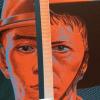
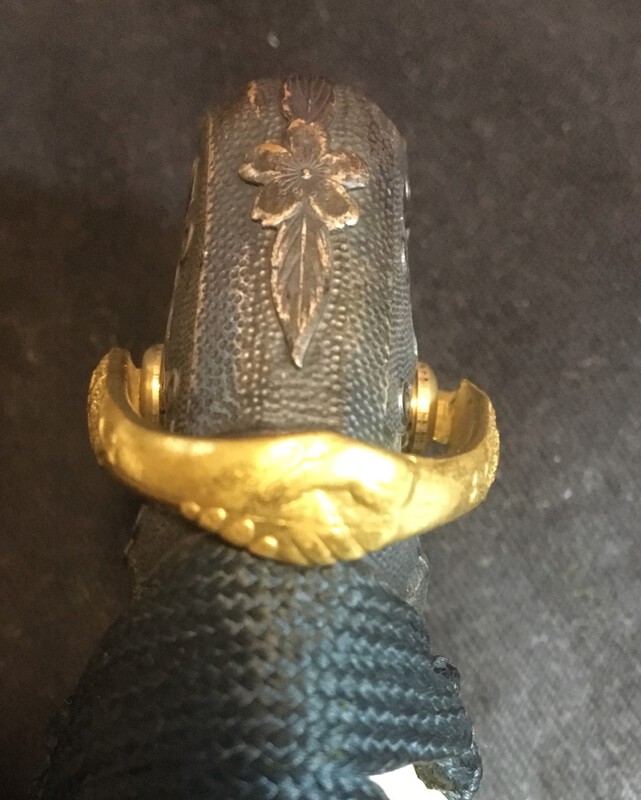
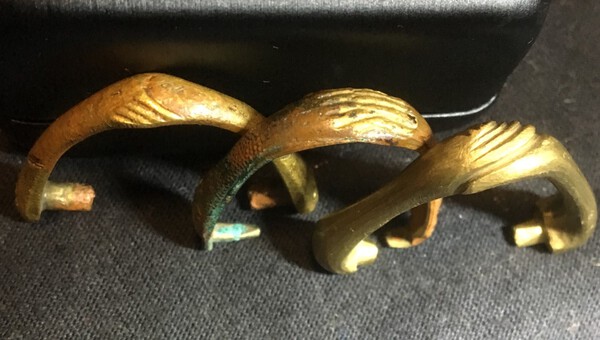

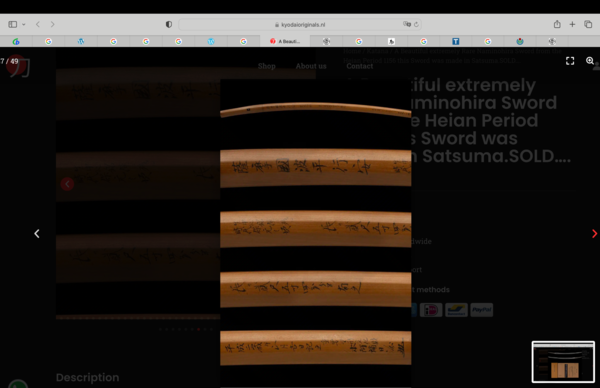

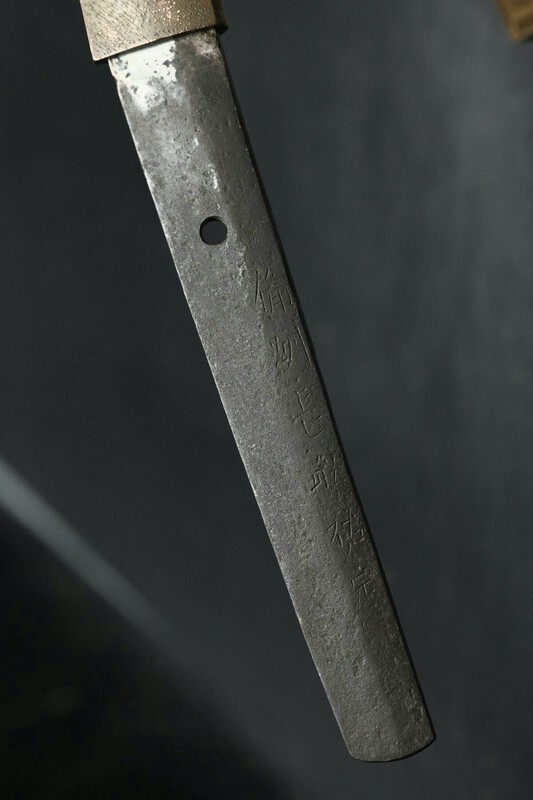
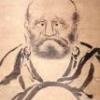


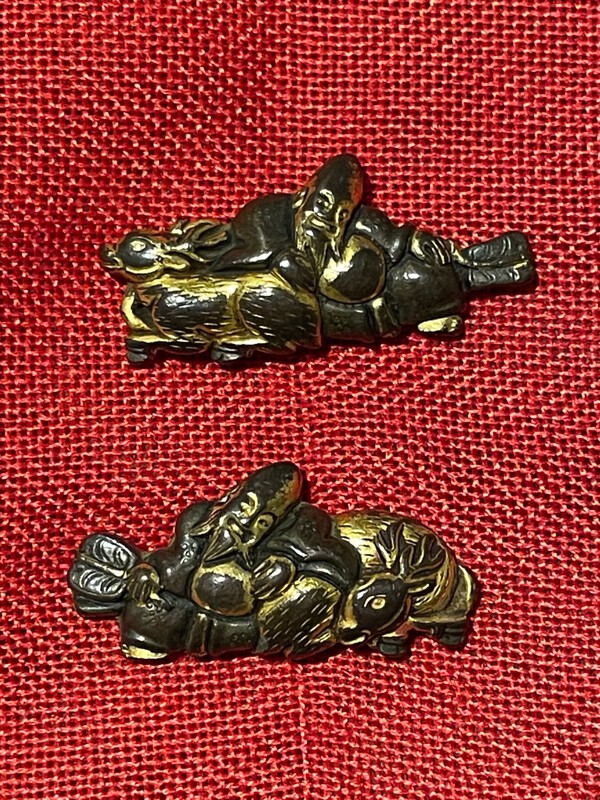








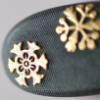








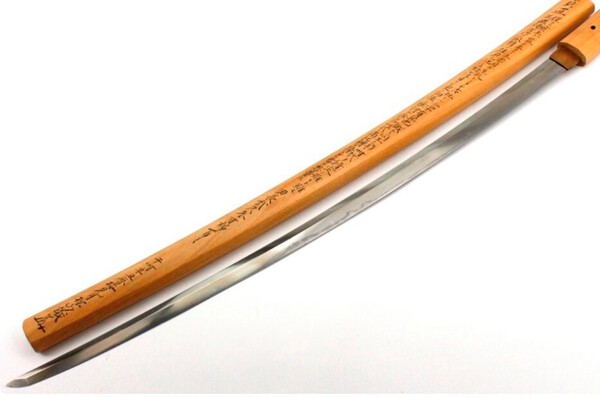
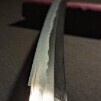






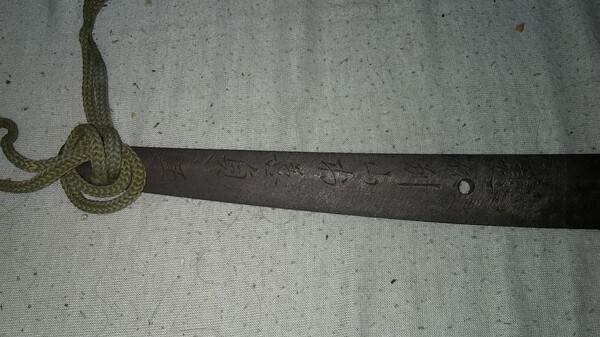
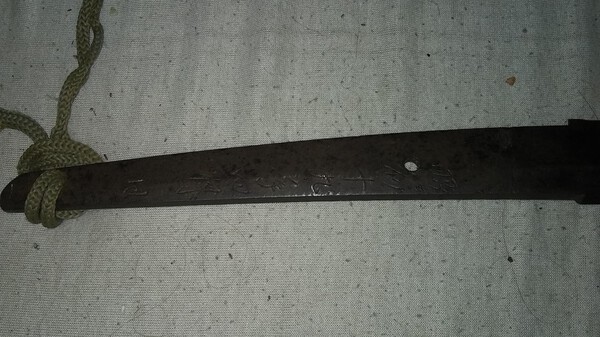


.jpeg.c785611192818fe2f38f34eca0923b8f.jpeg)
